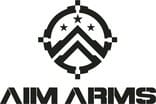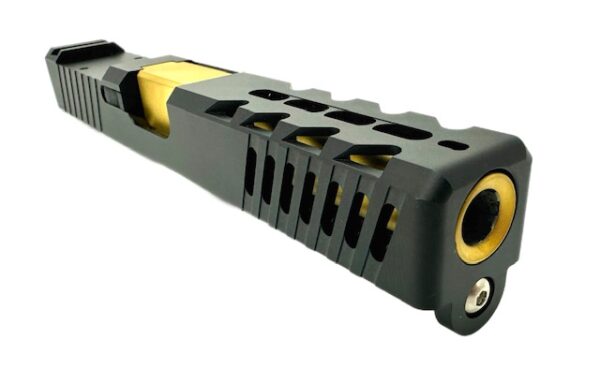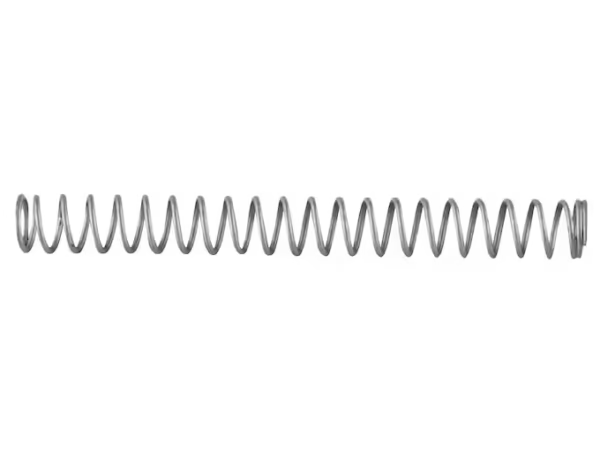
Troubleshooting AimArms Products
In this section we will talk about the most common Glock malfunctions Contact us to know more about Troubleshooting AimArms Products.
Failure to Feed
Feeding failures are mostly a result of poor magazines, feed ramps, and poor recoil springs. Tension is key. If there is too much tension, the recoil can return too quickly. Insufficient tension can increase dwell time, causing the slide to cycle too slowly and fail to chamber the round. Suppose the magazine spring is weak, the round may not chamber even with a fully loaded magazine.When looking at feeding failures to try and figure out the cause, consider other aspects such as the ammo you are using or even how you are holding the handgun. If you are unable to identify or fix the issue, you should always contact the manufacturer for help.
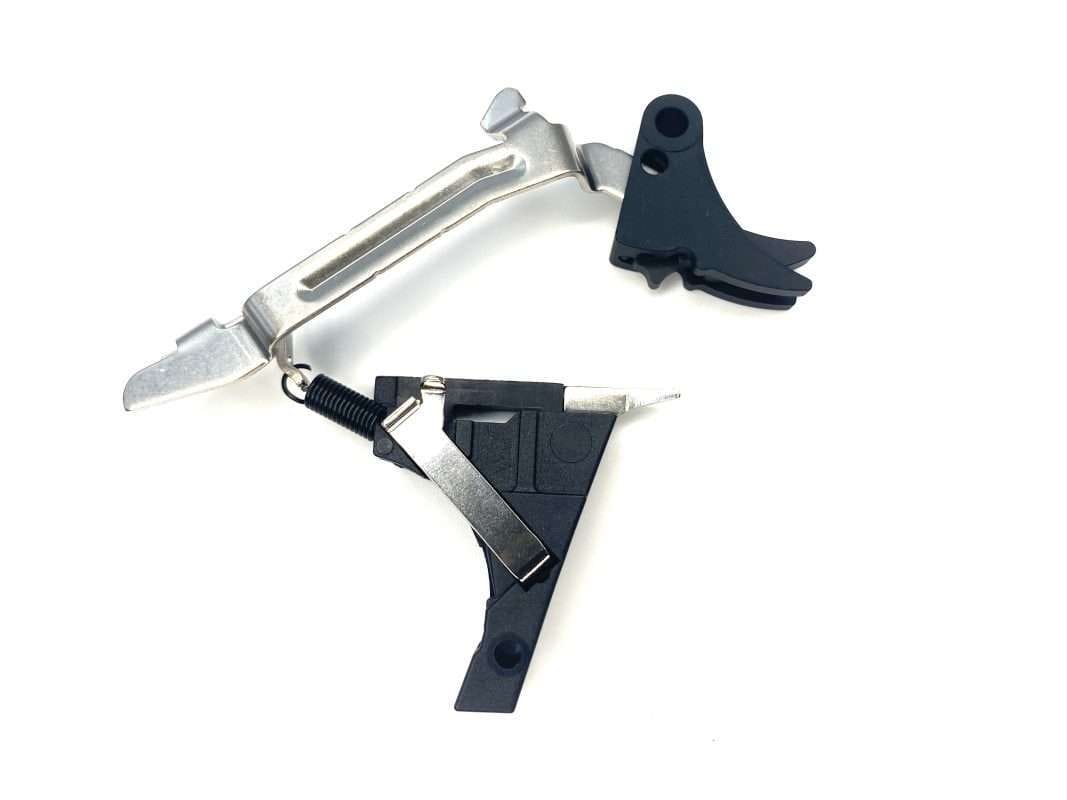
If the trigger feels rough
Check connector & trigger surfaces for burrs of metal caused by the manufacturing process. Remove burrs and/or replace the trigger.
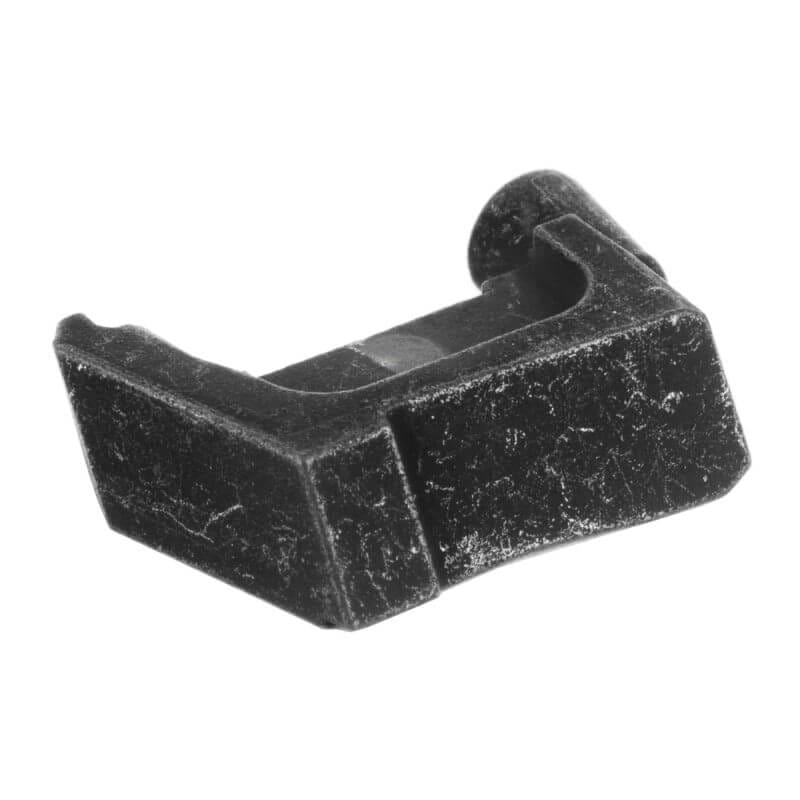
Extractor
The extractor is a small spring-loaded part that helps remove fired cartridges from the chamber of the firearm. If this part fails, it is often because there has been damage to the extractor depressor channel. If this is the case, the additional friction between the extractor and the depressor spring will slow movement, potentially causing issues.
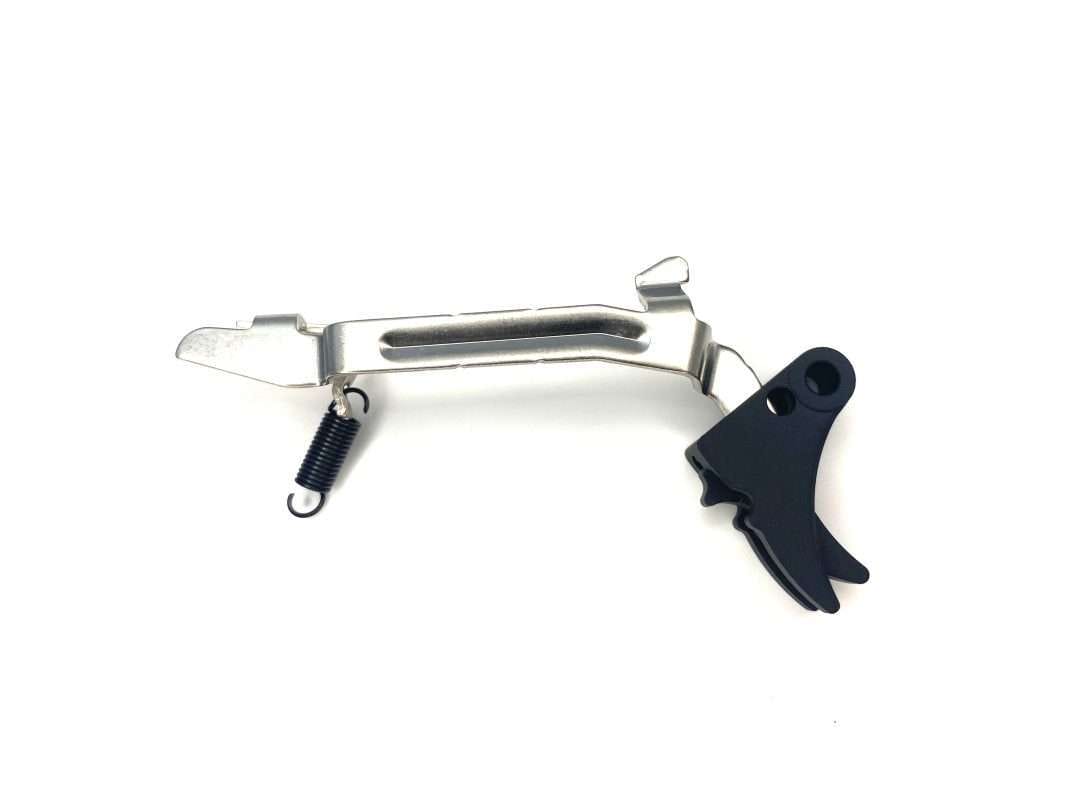
Problems With the Trigger
A broken trigger spring or a problematic trigger can cause issues with a Glock handgun forcing it to malfunction. The trigger spring’s job is to draw the trigger away from the reset position, it is also important for helping raise up the trigger bar cruciform, which it won’t do if there are issues.
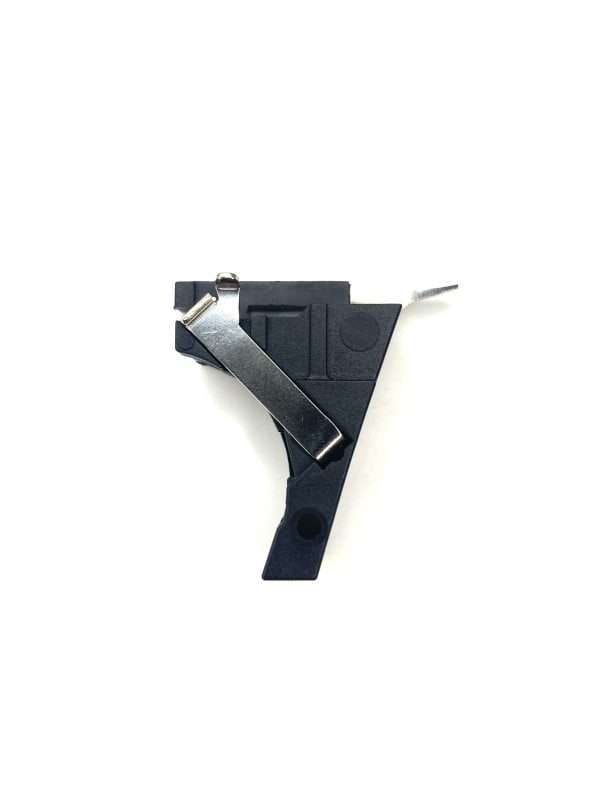
Problems with the connector
Important: When you press the connector into the housing, double check to make sure that the bottom portion that is mounted in the trigger mechanism housing sits slightly below flush in the trigger mechanism housing.
There are slight variances in the trigger mechanism housings that can affect the final bend angles.
Examine the angle before adjusting, so you know whether to move it in or out.
You will need to tug or press the connector to adjust it.
Please do not take a pair of pliers or a vice to do this type of adjustments. Often times by using a vice or pliers you will unintentionally Marr and/or break the connector. This is a normal adjustment that will not affect the reliability of your weapon in any way.
The connector being bent too far inwards is the most common customer issue, the connectors are modeled after the Glock connectors, and will need to be bent to work correctly.
Check the outward bend angle of the connector. This is done by sliding a piece of (.003 or standard 20 lb paper) paper between the connector and the top portion of the trigger housing. The paper should slide through with a little resistance. If the paper does not slide through, then the connector needs to be removed and bent outwards slightly. If it slides through with no resistance the connector needs to be removed and bent inwards slightly.
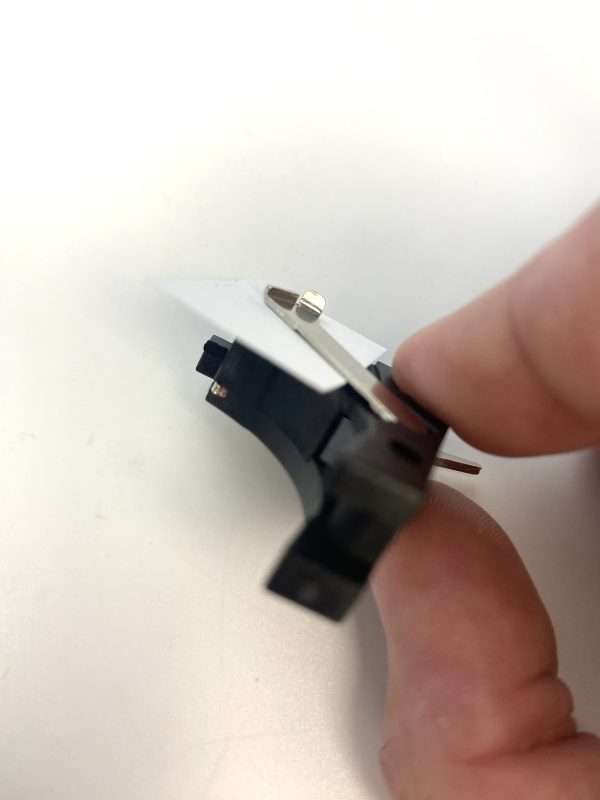
Measuring the bend Angle
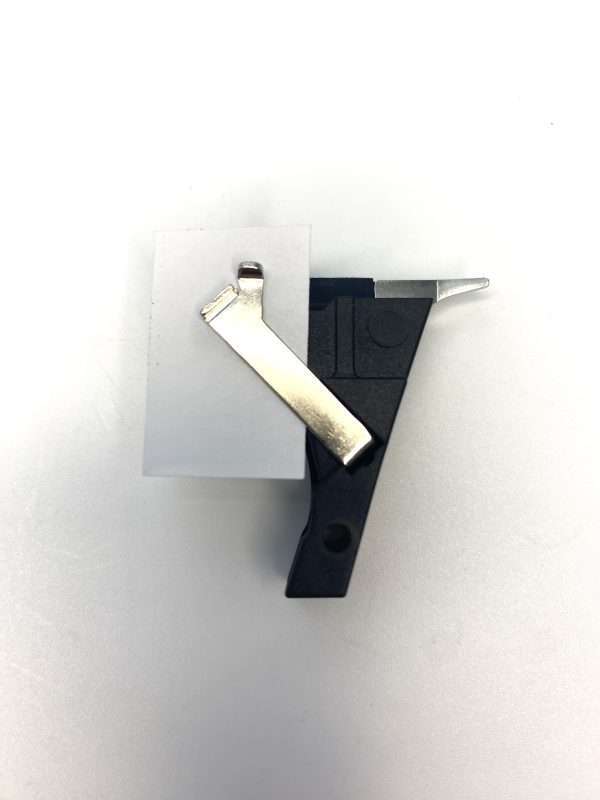
Checking the bend angle with a piece of paper
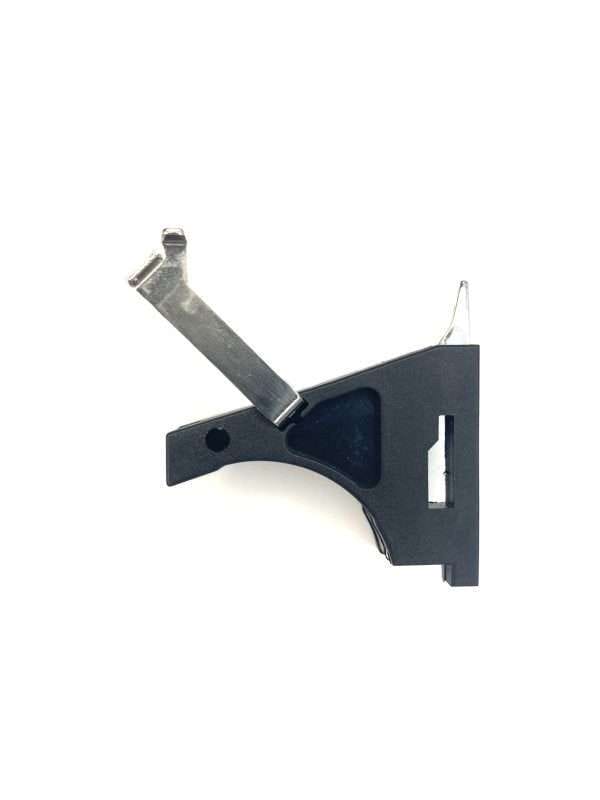
Adjusting the bend angle
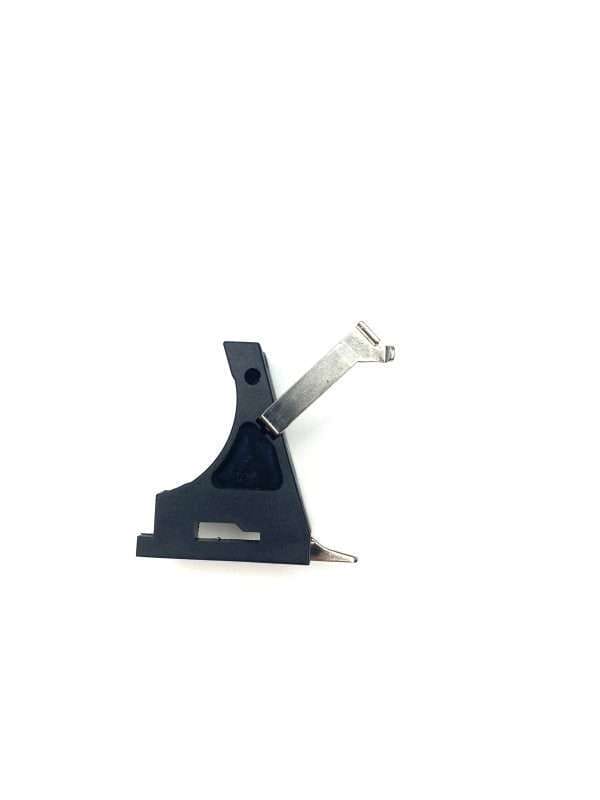
Removal of the Connector
- The easiest way to remove the connector is to use another connector by pushing one connector out of the trigger housing with the other connector.
- Using the long mounting tab on the bottom of the connector.
- Insert the connector into the rectangular slot of the trigger housing located on the opposite side of the housing.
- Push the installed connector out of the housing.
- Do not bend the connector or attempt to pry it out with pliers, as you could easily mar or break the housing.
(Important) If installing a drop-in connector, replace the removed connector with the drop-in one and push the lower part of the connector flush with the trigger mechanism housing. - Reverse the steps and reassemble the pistol.
- Function check.

Lube Is Important, So Do It Often and Do It Right!
The truth is that most guns will run great clean and lubed. They also will run fine dirty and lubed.
But almost no gun will run dry — for any appreciable amount of time — no matter if it’s clean or dirty.
Lube is super important so do it right and do it often.

Issues With the Click
When you fire the handgun and you hear a click instead of a bang, you have a click issue. Problems with the firearm itself or the ammunition often cause this, but a faulty magazine can sometimes cause it as well. To find out, try tapping the Magazine Baseplate firmly to ensure you seat the magazine correctly. Then clear the chamber and load a new round.
If the magazine spring is weak, you may find that the handgun fails to chamber the round even if you load a fresh magazine with plenty of force. If this is the case, look into replacing the magazine to avoid further malfunctions.
Some of the most important Glock maintenance tips to remember are to regularly clean and inspect your Glock by taking it apart and using appropriate tools, materials and substances to clean each section. That way, you can stay on top of the overall condition of your handgun, get to know it’s working parts and recognize when things aren’t working properly.
